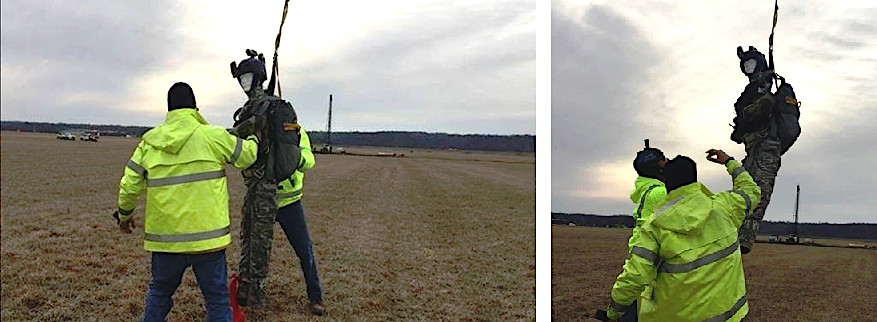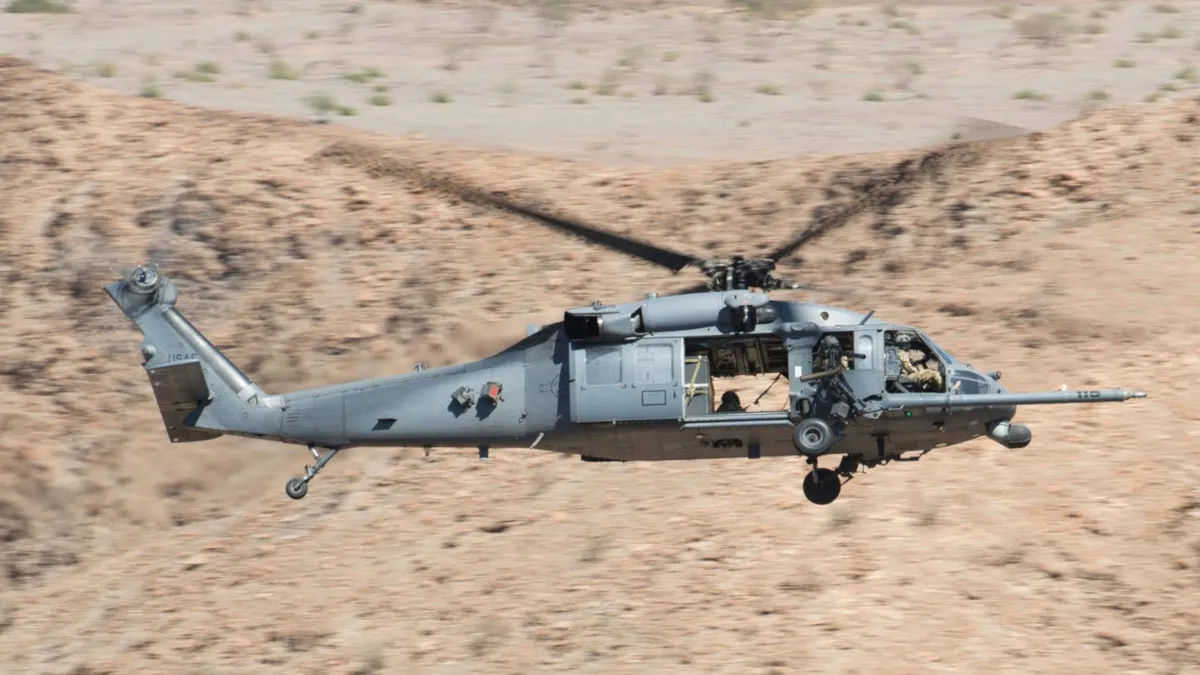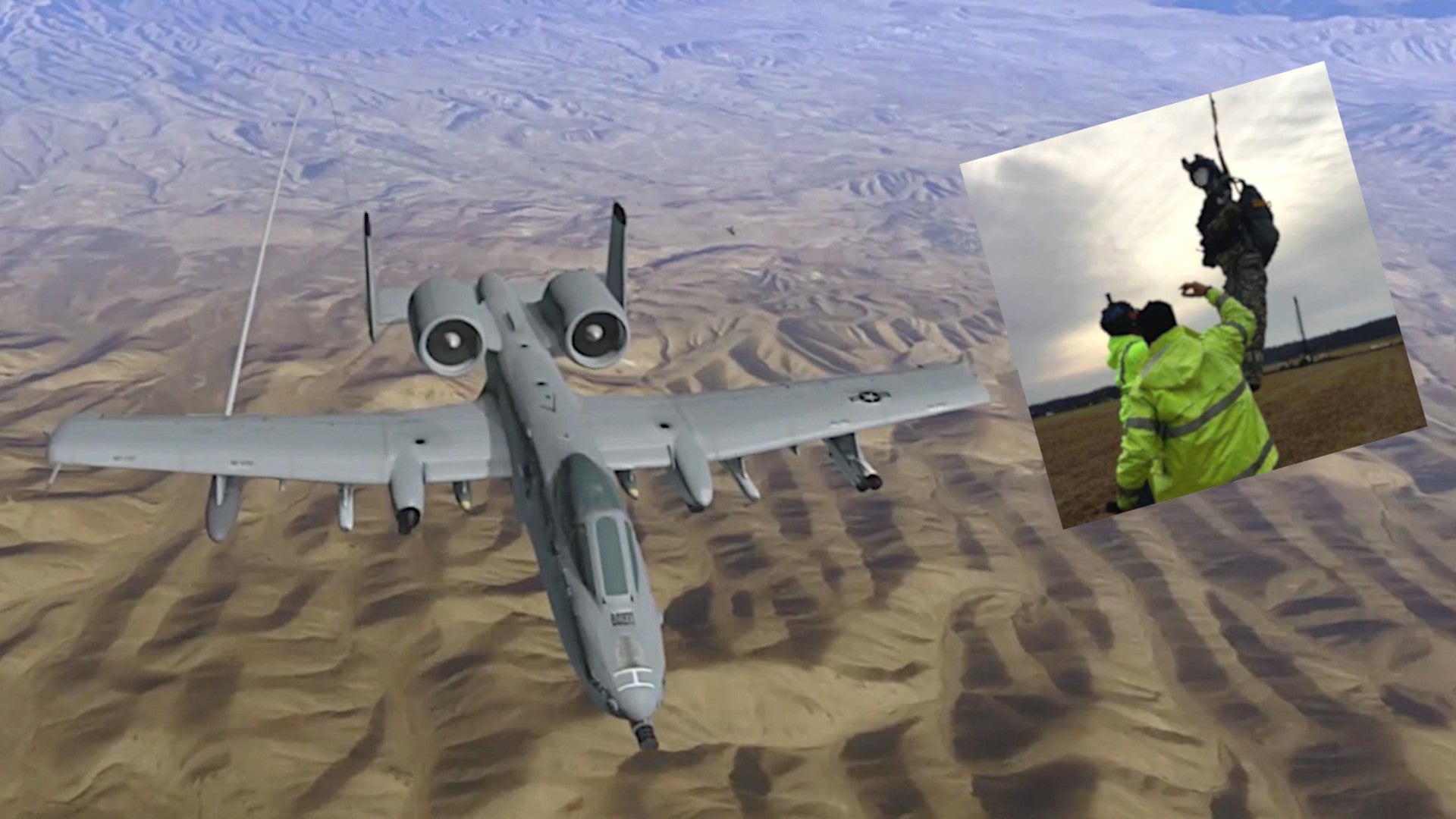A U.S. defense contractor is pitching a novel way to extract downed pilots who might find themselves deep within hostile territory or stranded in otherwise inaccessible terrain whereby another plane throws them a line that simply yanks them off the ground and tows them to safety. The proposal is, in many ways, a spiritual successor to similar systems that emerged during the Cold War, but could offer significant advantages in reliability and safety, as well as being something that virtually any aircraft could employ with limited modifications. This new development also comes as the U.S. Air Force, in particular, is increasingly concerned about how to rescue the crew of aircraft that get shot down in heavily defended territory that will only be increasingly off-limits to conventional combat search and rescue platforms.
Modern Technology Solutions, Inc. (MTSI), an engineering firm that already has a number of contracts across the U.S. military, first announced what it is calling the Rapid Aerial Extraction System (RAES) back on June 5, 2019. The company is already at work on the project as a private venture and conducted an initial demonstration of the concept in February 2019, according to Aviation Week. This test involved a light plane recovering a dummy.
“RAES gives you the speed, range, and economy of a fixed-wing aircraft and the vertical lift hoist-like capability of rotorcraft,” Ben Bosma, MTSI’s Principal Engineer, said in a press release. “The system is scalable and can be mounted on a wide variety of aircraft from fighters to transports.”
The system itself consists of just a stabilizer, winch, and tether package, according to MTSI’s website. There are no special modifications required to install these components on any aircraft and a computer-generated video presentation, seen below, shows an A-10 Warthog ground attack aircraft deploying the RAES via a podded arrangement that it carries like any other store.

How it works is relatively simple. The plane deploys the stabilizer which then begins to fall to earth unwinding the tether line – which MTSI says is “stronger than steel” – from the winch as it goes. A drogue chute deploys right before the stabilizer hits the ground.
Above, the aircraft that launched it performs a series of maneuvers to create a spiraling loop in the line with a radius of approximately 2,400 feet. Down below, the downed pilot straps themselves onto the stabilizer, which also includes a new parachute. They then signal the plane orbiting above, which then flies away with the individual in tow.

This is, in many ways, is similar to how the Air Force’s now-retired Fulton Recovery System, also known as Skyhook, worked. That system involved a specially modified plane dropping a canister to a downed pilot, after which that individual would inflate a balloon with helium that would carry aloft a tether line. The plane would use a v-shaped hook mounted on the nose to catch this line. The aircraft’s crew would then use a separate set of equipment to reel in the recovered individual and get them onboard.
Air Force Special Operations Command (AFSOC) was the last to employ the Fulton on modified MC-130E Combat Talon special operations transports. AFSOC officially retired the system in 1996.


However, MTSI says that RAES will exert much less force on the individual at the end of the tether than Fulton, making it much safer all around. In its February 2019 demonstration, the vertical force exerted on the package at the end of the line was less than two Gs. This new system also won’t require a modified cargo aircraft to deploy it.
The RAES operating concept actually owes more to a technique that Nate Saint, a Christian missionary pilot, devised in the 1950s to drop items to isolated native tribes in South America. Saint would drop packages at the end of a line and then enter a circular orbit creating a spiral that would both slow and stabilize the payload, causing it to fall both accurately and gently. MTSI’s recovery concept just puts all this in reverse.
If RAES proves to be feasible, it could also potentially have applications beyond combat search and rescue (CSAR), just like Fulton. U.S. military aircraft might be able to use it to recover covert agents or small numbers of special operations forces, as well as other small payloads, from denied areas. Since it uses Saint’s basic principles, there is also the possibility that MTSI might be able to develop a version that can insert personnel or cargo, too.
“The recent RAES demonstration points to a cost-effective and highly adaptable solution to combat search and rescue in the contested domain,” Mike Hostage, a retired U.S. Air Force General who last served as head of Air Combat Command and was a known critic of buying new traditional CSAR helicopters, said in MTSI’s press release. “The concept may also offer a rapid and covert means of precision insertion and extraction for special operations.”

Of course, this new personnel recovery system wouldn’t necessarily be a perfect solution that would work in all cases. The most obvious issue is if the downed pilot was too injured to make it to where the stabilizer landed and strap themselves in.
Another issue is that if the area where a downed pilot is awaiting extraction is too heavily defended for traditional CSAR platforms, it may be equally dangerous for any aircraft carrying the RAES externally. Having to hold a relatively stationary orbit while the stabilizer falls to the ground and then have to keep doing so as the individual below straps in could be a risky proposition.
It is possible that stealthy aircraft could carry RAES internally, as they do with towed decoys, but any package that includes a spare parachute will be much larger than those countermeasures systems. A future stealthy transport aircraft might be another option to deploy such a system in particularly high-risk scenarios.

The radar signature of any aircraft towing a person behind is likely to be significantly increased compared to one flying in full-stealth mode, too. It’s not clear just how fast any plane will be able to safely pull the exposed individual along as they egress the area, either.
But MTSI already envisions RAES as part of a larger CSAR ecosystem. After the plane towing the downed pilot reaches a safer area, the individual trailing behind is supposed to release their harness and parachute down to the ground, where more traditional platforms, such as HH-60G Pave Hawk helicopters or CV-22 Osprey tilt-rotors, would recover them as they would normally.
Beyond that, it’s clear that the Air Force, as well as other branches of the U.S. military, is increasingly aware that traditional CSAR platforms are unlikely to be able to perform all of their missions in future large-scale conflicts where stealthy planes are flying deep into denied areas that the service has already deemed too risky for non-stealthy aircraft. Potential high-end opponents, such as Russia and China, are only continuing to develop more capable integrated air defense networks.
In May 2019, the Air Force Research Laboratory issued its own call for proposals for a potential autonomous “air taxi” type recovery system that a cargo plane could drop to downed pilots and that would then fly them to safety. At the same time, the service remains fully committed to begin fielding its new HH-60W Combat Rescue Helicopter, a very traditional platform, next year.
All told, it will be very interesting to see how the development of the RAES progresses and how such a system might fit within new, over-arching CSAR operating concepts that the Air Force, and other services, will have to implement in the future.
Contact the author: joe@thedrive.com
